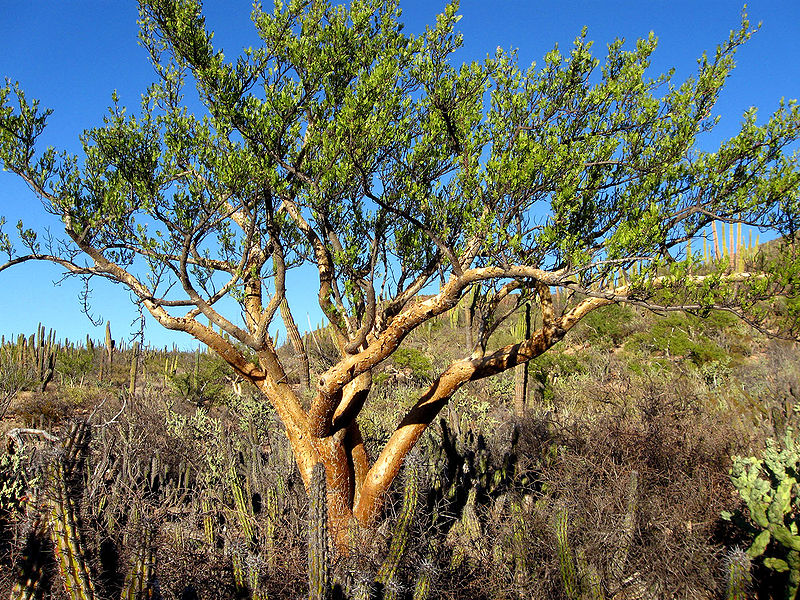

Contributor
- Topics: Archive

Little-known plants add a sense of mystery and excitement to gardening. As they become established in a garden, the mystery is unlocked as we observe how the plants want to grow and judge their ornamental qualities against tried and true plants already in the garden. When I first acquired a small plant of Ercilla volubilis ten years ago, what intrigued me most about it was the almost complete lack of published information about this odd Chilean vine. As I searched through all the garden books at my disposal, most of them had no information at all, and those that did usually offered vague and occasionally inaccurate information.
Native to the southern half of Chile, Ercilla can be found along the edges of woodlands and in mixed thickets, from the foothills of the Andes to the coastal forests. Vigorous shoots vine up through the foliage to rest on the branches of shrubs and small trees; occasional stems adhere to tree trunks with the help of adhesive disks. The ovate, evergreen leaves are bright green and about one to one-and-a-half inches long. In early spring (late March in the Pacific Northwest), short, dense, cylindrical spikes of flowers—reminiscent of ceanothus blossoms—hang in profusion along the outer ends of the branches. The typical form in cultivation has soft pink flowers, but creamy white forms are known in the wild. They are reported to be fragrant, but I cannot recall any fragrance on our plant; perhaps, in a warmer climate, the fragrance would be more noticeable.
Introduced to Western botanists in 1840 by the prolific South American explorer and collector Thomas Bridges, it was initially dubbed Bridgesia spicata by Hooker. Later, it was discovered that the vine had already been named Ercilla, after Alonso de Ercilla, a Spanish nobleman, soldier, and writer of La Araucana, which is considered to be one of the greatest classical Spanish epic poems ever written. Lingering in cultivation in the United Kingdom since the Victorian era, this vine never seemed to make its way into the North American landscape until recently, and it has never become readily available.
Ercilla can be grown on a wall where the adhesive disks on its stems will cling to the structure; often, however, it will only be weakly attached to the wall and will need additional support as the vine gains in size. Our ten-year-old plant has stems about fifteen feet in length, with a rather open habit. A fully mature vine will likely only reach twenty to twenty-five feet tall and could easily be kept smaller with light pruning after the flowering season. Ercilla prefers a location with good garden soil that drains well. Its natural range would suggest that it should thrive in coastal areas from Southern California to Vancouver, British Columbia. It is rather untested for hardiness, but it has tolerated temperatures as low as 11°F and is suspected to be hardy to as low as 0°F. In hotter areas, I would recommend planting ercilla in partial shade, preferably with morning sun and afternoon shade. In colder areas, a heavy winter mulch with some protection of the young vines for the first two years should help insure success.
The Elisabeth C Miller Botanical Garden offered this Chilean oddity to the readers of Pacific Horticulture in October 2011 as part of the Pacific Plant Promotions program. Ercilla volubilis has proven to be an interesting and easily grown addition to the Miller Garden and a plant we believe deserves wider use in other West Coast gardens.
Share:
Social Media
Garden Futurist Podcast
Most Popular
Videos
Topics
Related Posts

Ground Up Science for Greener Cities with Garden Futurist Dr. Alessandro Ossola
Spring 2023 Listen to the Podcast here. Alessandro Ossola is a scientist who gets very excited about the challenge of climate change allowing for an

Readying Urban Forests for Climate Realities with Garden Futurist Dr. Greg McPherson
Winter 2023 Listen to the Podcast here. “Going from the mow and blow to a more horticulturally knowledgeable approach to maintaining the landscape. And that

Welcome, Greywater, to the Garden
Summer 2022 Oh, summer: delightful warm air, tomatoes swelling on the vine, fragrant blooms on an evening stroll. When it’s warm and rainless, how is

Big Tree-Data and Big-Tree Data with Garden Futurist Matt Ritter
Summer 2022 Listen to the full Garden Futurist: Episode XV podcast here. We are in an environmental crisis right now in many parts of California










Responses